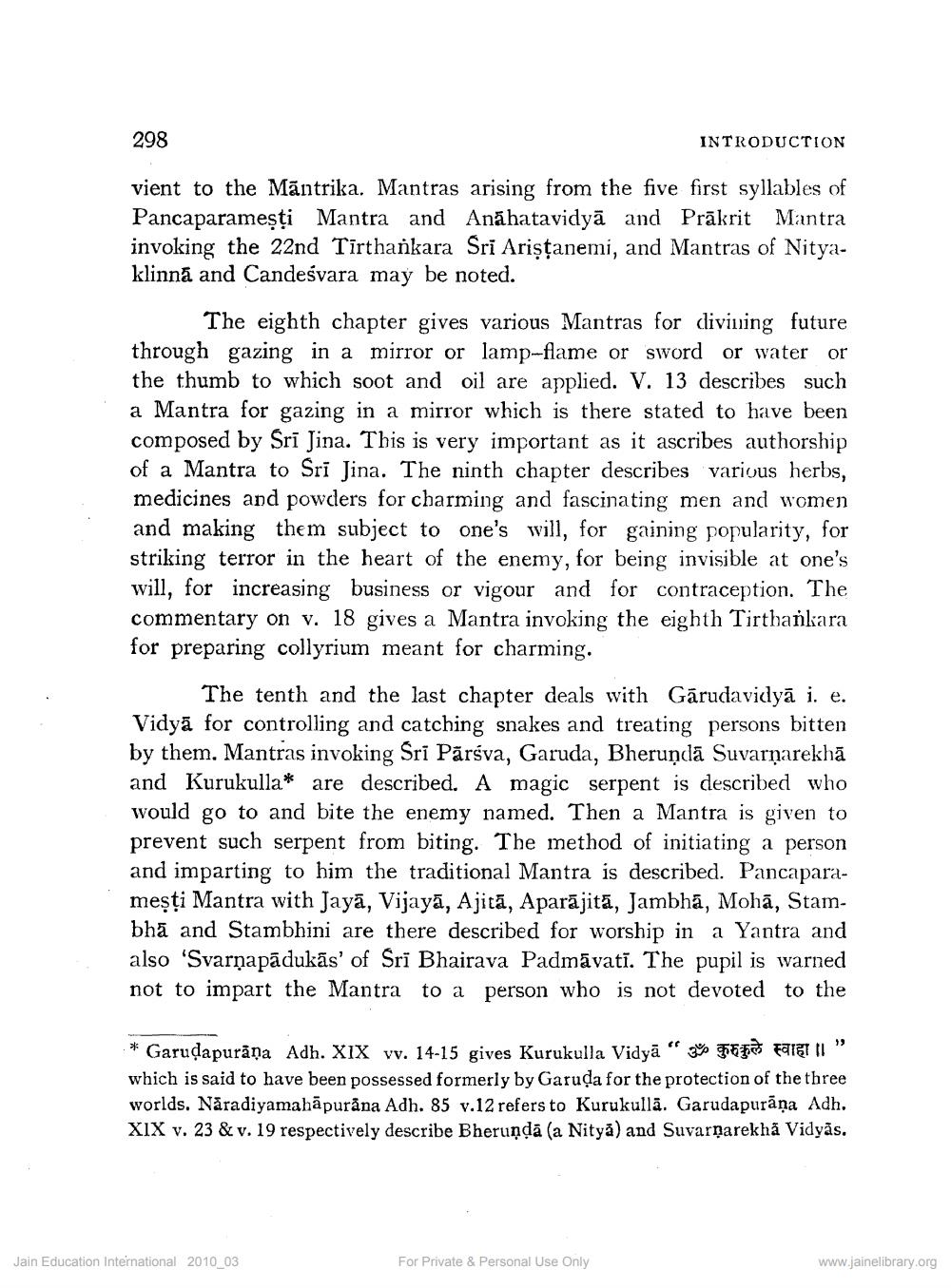________________
298
INTRODUCTION
vient to the Māntrika. Mantras arising from the five first syllables of Pancaparameşti Mantra and Anahatavidyā and Prākrit Mantra invoking the 22nd Tirthankara Sri Aristanemi, and Mantras of Nityaklinnā and Candesvara may be noted.
The eighth chapter gives various Mantras for divining future through gazing in a mirror or lamp-flame or sword or water or the thumb to which soot and oil are applied. V. 13 describes such a Mantra for gazing in a mirror which is there stated to have been composed by Srī Jina. This is very important as it ascribes authorship of a Mantra to Sri Jina. The ninth chapter describes various herbs, medicines and powders for charming and fascinating men and women and making them subject to one's will, for gaining popularity, for striking terror in the heart of the enemy, for being invisible at one's will, for increasing business or vigour and for contraception. The commentary on v. 18 gives a Mantra invoking the eighth Tirthankara for preparing collyrium meant for charming.
The tenth and the last chapter deals with Gārudavidyā i. e. Vidyā for controlling and catching snakes and treating persons bitten by them. Mantras invoking Sri Pārsva, Garuda, Bherundā Suvarnarekhā and Kurukulla* are described. A magic serpent is described who would go to and bite the enemy named. Then a Mantra is given to prevent such serpent from biting. The method of initiating a person and imparting to him the traditional Mantra is described. Pancaparamesti Mantra with Jaya, Vijayā, Ajitā, Aparājita, Jambhā, Mohā, Stambhā and Stambhini are there described for worship in a Yantra and also 'Svarnapādukās' of Sri Bhairava Padmavatī. The pupil is warned not to impart the Mantra to a person who is not devoted to the
* Garudapurāņa Adh. XIX vv. 14-15 gives Kurukulla Vidyā" 3
Falet 11" which is said to have been possessed formerly by Garuda for the protection of the three worlds. Náradiyamahāpurana Adh. 85 v.12 refers to Kurukullā. Garudapurāņa Adh. XIX v. 23 & v. 19 respectively describe Bheruņda (a Nitya) and Suvarnarekha Vidyās.
Jain Education International 2010_03
For Private & Personal Use Only
www.jainelibrary.org




